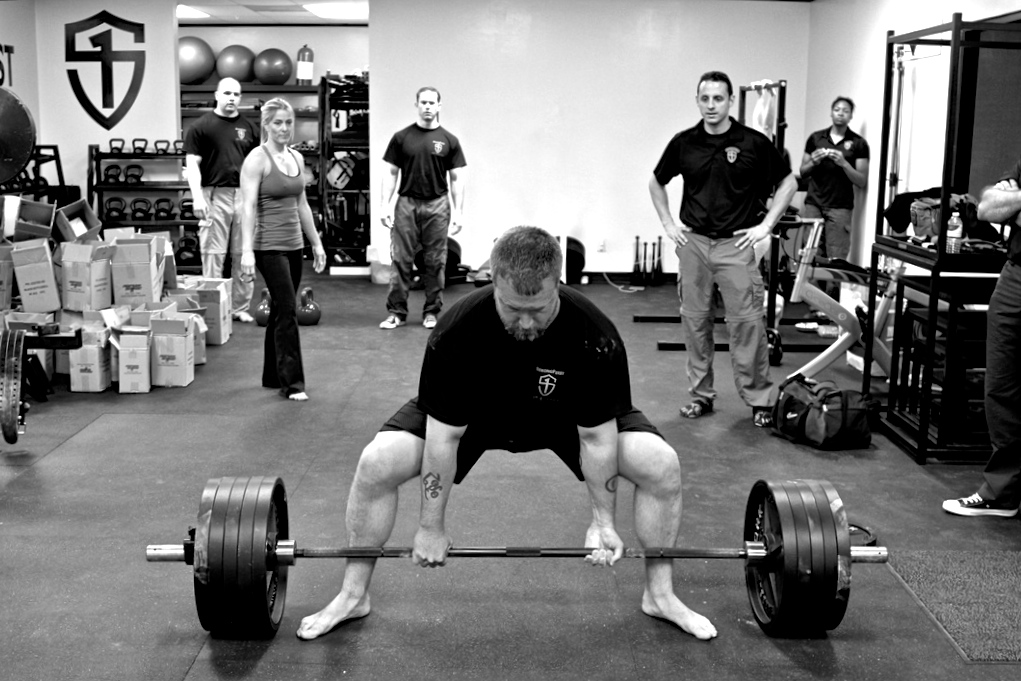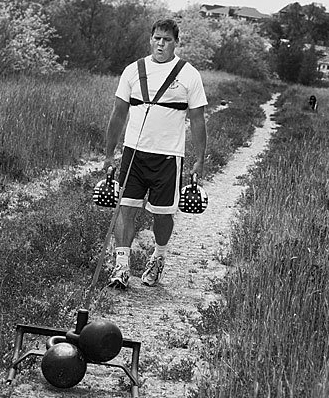Before diving into an in-depth series of articles explaining the training principles we outlined in last month’s Expect the Unexpected Mountain Fitness column, we wanted to cover a topic that was at the very core of the inspiration behind an emphasis on hunt specific fitness in the JOMH. Spend any time online researching this topic and you’ll find a wide range of exercises and lifts making the list of “most important for hunting”. There are some great ideas out there but in our opinion, more often than not the exercises listed place too much emphasis on “gym fitness” as opposed to outdoor or more specifically mountain fitness. Remember, we are training to handle the demands of hunting in the high and wild places of the world not to max out on our bench or squat or win a bodybuilding competition. If those are your goals and you hunt a few weekends a year, all the power to you but the bulk of those types of training techniques and exercises have little to no place in the hunter’s training regimen and should not be included on the list of “most important” for the serious mountain or wilderness hunter.
We consider the three lifts outlined and explained below to be absolutely integral elements to any viable mountain or wilderness hunting training program and should form the very foundation upon which your training program is designed. Their importance cannot be overemphasized. In two of the three cases we highly recommend some coaching to get you started. No different than shooting, reloading or butchering at some point we all had to be shown how to do things properly. The truly valuable lifts or exercises are no exception and the time and money spent will pay dividends in your durability and longevity in the field.
Each of these exercises in one way or another has roots in the principles outlined last month. For some of you, all three of these lifts will be new and potentially intimidating (principle # 1, Train the Mind) and for others they may require you to step out of your typical routine or comfort zone (again principle # 1 and # 6 through # 9). There is no substitute for specificity (aka time in the field) but given the fact most of us incorporate some form of gym or cross-training into our weekly routines, it is integral this training be directly transferable to the hunts we spend our entire year planning for. All three of the following lifts will build total body strength, power, endurance, balance, and coordination and prepare you for the demands of any hunting situation in any terrain under any circumstances.
In our opinion these are without question the three most important lifts for the hunter athlete.
The Deadlift

Combine this hunt transferability with the corrective and rehabilitative applications of the deadlift and in our opinion this exercise in all its variations should be incorporated into every serious hunting training program. A few hunting specific variations we like include using heavy sandbags (a true dead weight effect) and performing the deadlift in a non-linear or rotational fashion such as lifting a sandbag or heavy loaded pack up onto a box or truck tailgate if training outside. Remember, bars and the controlled circumstances found in the gym have their purpose but at the end of the day there are few perfect grips or linear situations in Nature. We always try to get creative with our lift variations and mimic or approximate what we’ll encounter in the field.
The deadlift is an exercise many people shy away from due to the perceived stress it poses on the back, when in fact it is exactly the lift/exercise one should be doing to build strength and durability in their back, hips and torso. It is definitely a lift that benefits from some coaching however so if you’re new to the deadlift we advise spending time with a coach or trainer to learn the proper technique to complete this lift safely. You’ll reap the benefits as you increase the weights you’re pulling. With numerous variations possible the deadlift can be done just about anywhere with everything from a traditional bar/plate set-up in a gym to kettlebells outdoors. From single-leg to double-leg it’s possible to develop balance, coordination and pure strength along the entire posterior muscular chain of the body with this classic lift. In our opinion, it should be the foundation of every program.
The Farmer’s Carry

The Turkish Get-Up
For many of you, this will be a new exercise and if you have not heard of the “TGU” welcome to a whole new world. If we had to train with one piece of equipment (in varying weights) for the remainder of our lives, it would be kettlebells. There are no other training tools that so effectively train so many of our physiological systems while duplicating the stresses and demands of the natural world we’ll encounter in the field. And of all the lifts or exercises you can perform with kettlebells, the Turkish Get-Up reigns supreme. It is a highly complex lift that requires strength, coordination, balance and endurance, which is why it makes our top three. This is not an exercise you attempt after watching a few YouTube videos however. We absolutely recommend you spend some time with a trainer or coach certified to instruct the techniques of both the TGU specifically and kettlebells in general. We guarantee you will not be disappointed you did.
There are few exercises that target as many movements and muscle groups in one repetition as the TGU. In a single rep it trains upper and lower body stability, reflex control of the trunk/torso and extremities, stimulates our balance systems, promotes cross-coordination (right and left side forced to work together) and develops spatial awareness, upper body strength, trunk strength and hip strength. Combine this with the fact it can be used as a corrective or rehabilitative exercise, a pure conditioning exercise at high reps and low weight and a true test of functional and integrated maximal strength and in our opinion the TGU belongs in every mountain hunter’s program. When completed at the outset of a training session it gets the system firing on all cylinders and sets the tone neuromuscularly for the rest of your workout. In a world where most of us sit more than we stand and move the TGU will not only help strip away the adaptations of a deskbound lifestyle but develop the endurance, strength and coordination the mountains and wilderness demand. If you had to do one exercise and one exercise only for the remainder of your life, it would be the TGU.
Adam Janke
Editor in Chief
Canadian Board Certified Pedorthist
Biomechanist
FMS Level 1 & 2
From the Editors:
As mentioned at the beginning of the article, finding a coach or course in your area to teach you about the tools and techniques we covered is advisable. In our opinion the people at StrongFirst provide some of the best programming specific to the needs of the mountain or wilderness hunter. Their website www.strongfirst.com has an international list of courses and coaches trained in the skills and methods required to implement the lifts we covered in this month’s article. Remember, knowledge is power.

